Understanding User Experience (UX) Design

Have you ever used an app or website where you can’t understand how to complete your desired task? Can’t figure out how to pay bills? Don’t know how to order that specific replacement part? These issues might feel like they are just your problem; however, more often than not, these problems are present for many people.
These poor experiences all have one thing in common – a bad user experience. Any website, app, or other experience should be designed with the users of those products in mind. Often times companies are too busy developing a product for consumption and profit to think about the people that will be using them. Essentially, a successful brand is dependent on the enjoyment of its customer’s experience.
What Exactly is UX?
UX is about seamless design, from the initial pitching of a product to its final release and subsequent updates. UX is an umbrella term for a cyclical design process in which teams work together to ensure a product is as user friendly and intuitive as possible.
More specifically:
“User Experience Design is the process of manipulating user behavior through usability, accessibility, and desirability provided in the interaction with a product. UXD is the practice of designing products, processes, services, events, and environments with a focus placed on the quality of the user experience and culturally relevant solutions.” – Aarts, Emile H. L.; Stefano Marzano (2003)

How do you achieve a good UX?
Good UX is dependent on the quality of work put into understanding the people using a product, good, or service. By conducting empathetic research with your customers, you can better understand their motivations, behaviors, and tendencies to maximize their experience, bolstering your brand and product in the process.
Accessible:
Contains a system’s ease of reach, use, and understanding. Provides a UX which can be accessed by users of a full range of abilities. Creating an accessible product means designing with consideration of those living with hearing, vision, mobility, or learning impairment.
Usable:
Enables users to achieve their goals effectively and efficiently.
Useful:
Provides a specific purpose for its target customers.
Findable:
Enhances ability to find and identify a product, good, or service.
Credible:
Cements the user’s trust in the product that they are using.
Desirable:
Heightens engagement through branding, image, identity, aesthetics and emotional design. If your product is desirable, your users will transfer that desire to other potential users.
Valuable:
Delivers value to the business and its customers.
While the above items are tenants of good design, each project has different needs and priorities. Balancing design with business objectives and technology limitations is part of every project and incorporating these sources is vital to the design process.
What is User Interface (UI) Design?
User Interface Design is the process of making interfaces in software or computerized devices with a focus on aesthetics and style. While UI falls under the UX umbrella, it is a separate process of identifying and applying appropriate styling, colors, fonts, etc to the interface that users will interact with. For example, a UI designer is in charge of the look, shape, and color of a button or popup as well as every other graphic element within the product. They also help to determine the logical order of content, what shape it takes, and how a user interacts with it.

How Does it Relate to UX?
As you can see successful products require a balanced approach to both UX and UI. One does not succeed without the other, and when they work together, they result in a truly enjoyable, valuable, and desirable product. The more time and development devoted to these processes, the better the outcome. If these processes are not allowed to flourish, the product may end up failing in key areas that will lose business, validity, and the trust of your customers.
